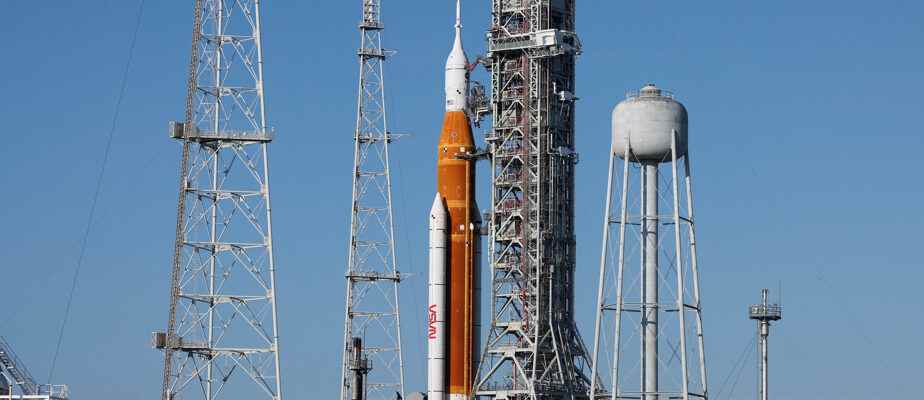The last time humans visited the moon, the satellite was a destination.
Posted at 2:06 p.m.
But, when NASA’s Artemis 1 mission lifts off on Monday, the Moon will be seen as a stopover on an even further journey.
“It’s really to learn how we can go even further,” says Isabelle Tremblay, director at the Canadian Space Agency. It’s really to learn how to get to the planet Mars. »
The Canadian Space Agency makes a major contribution to the Artemis mission.
Artemis 1 is the first in a series of flights to establish a station in lunar orbit that will serve as a springboard for future space adventures to the solar system. This mission aims in particular to deploy a dozen small scientific satellites in lunar orbit, to test NASA’s new launch system and to verify the capabilities of the Orion spacecraft for Artemis 2.
This is when things will start to get really interesting. Artemis 2, scheduled for liftoff in the spring of 2024, will be the first manned mission to the Moon since Apollo 17 half a century ago.
“There will be a Canada within the crew. That’s for sure,” says M.me Tremblay.

PHOTO THOM BAUR, REUTERS
Artemis 1 will take off Monday from Cape Canaveral, Florida.
If Artemis 2 will simply orbit the Moon, the subsequent mission will land. The goal of these missions is to go beyond the Earth satellite to assemble the Gateway lunar space station. Future expeditions to Mars and even beyond will depart from this location.
The Canadian contribution will be significant, since it is there that the third version of the famous Canadarm3 robotic arm will be deployed.
The Canadian Space Agency explains on its site that the Canadarm3 will in fact have two arms, each of which can repair the other. This system will provide maintenance, repair and inspection of Gateway Station, catch spacecraft sent to the station, move station modules and assist spacewalking astronauts.
“The design of Canadarm3 will allow it to operate completely autonomously. It can, however, be controlled from the ground by flight controllers specializing in robotics in Canada or by astronauts in the Gateway station during spacewalks, ”we can read on the Agency’s website.
This kind of contribution explains why Canadian scientists and astronauts play such a prominent role in space exploration, says Ms.me Tremblay.
“We always say that we fight in a higher category. »
Canada also participated in the design and construction of the new James Webb Space Telescope.
Isabelle Tremblay says Canadian scientists are at the forefront of space travel research. In particular, they are trying to find ways to feed astronauts or to ensure that they are kept healthy in deep space.
Artemis 1 will have to stay in space for up to 42 days. It must go into orbit around the Moon and then return, a journey of more than two million kilometers.
“The Moon is the gateway to get to Mars, says Mme Tremblay. It is on the Moon that we will learn to go further. »
